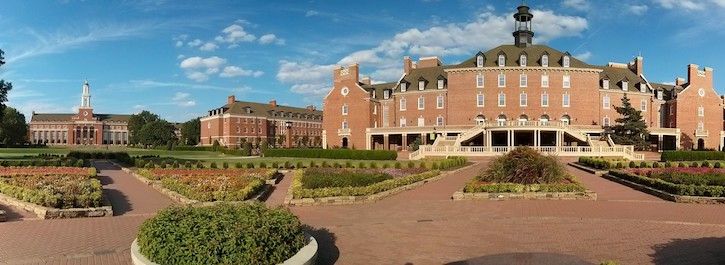Can Oklahoma Become the Silicon Valley of Health Analytics?
Armed with money and data from late Cerner CEO Neal Patterson, an institute at Oklahoma State University is aiming high.

(OSU campus photo courtesy Bryson Kinder, Wikimedia Commons. Image has been cropped for size.)
William Paiva, PhD, is aiming high.
“I have a goal of making Oklahoma the Silicon Valley of health data analytics,” he said in a speech on the second day of the AI in Healthcare Summit in Boston. And he may well have the resources to do it.
Paiva is the executive director of the Center for Health Systems Innovation (CHSI) at Oklahoma State University (OSU). The institute was endowed by late Cerner CEO Neal Patterson, who passed away in July. An OSU alumnus, Patterson gave the school $6 million to set it up, and it currently has a $3 million annual operating budget.
But money wasn’t the only gift that CHSI got from Patterson. The other gift is invaluable: data. Paiva said that Cerner donated one of the largest relational health databases in the country, with data from about 800 of the electronic health records (EHR) vendor’s 1,200 client hospitals. That’s more than 16 years of deep healthcare data, growing incrementally.
It isn’t real-time, the way the vendor sees it, but it’s expansive. It includes information on over 63 million unique patients, de-identified but linked longitudinally through a numbering system. CHSI can look at more than 2 billion lab results, 84 million acute admissions, and 150 million drug orders of 4,500 drugs. And it’s all HIPAA-compliant.
With all this data, CHSI can build countless predictive models, and they do. Many of them focus on health problems that are particularly prevalent in rural and Native American populations in states like Oklahoma: diabetes, tobacco use, and hypertension, for example. Paiva detailed a model for diabetic retinopathy prediction; a series of readmission risk scores; and atrial fibrillation treatment and success models broken down by race and gender.
“Almost without exception, the rural patient population is generally sicker than the urban patient population,” Paiva said. Not only that, the provider shortages are even greater in rural states: Oklahoma would have to hire 1,500 primary care physicians just to reach the already-inadequate national average.
The CHSI’s mission is to fix that with predictive analytics. “I truly believe we can’t graduate enough doctors to solve our rural healthcare challenges throughout the United States,” Paiva said. “We need to look at workflow improvements and technology layers.”
But that creates a problem in its own: If you’re trying to use predictive analytics as a force multiplier for physicians, you’re going to need a lot of analysts. CHSI is trying to create a pipeline for those, too.
In addition to undergraduate and post-doctoral informatics and analytics certification programs, Paiva said they even have initiatives to train students starting in middle school about healthcare analytics. There’s also “Predict for America,” modelled on “Teach for America” to attract promising analysts to the state and university for 2-year fellowships.
Paiva also added that he thinks the rural and Native American populations can be a proxy for urban populations, and the work they are doing will be applicable throughout the country, not just in the region it was developed.
“We’ve built both the innovation and implementation capabilities, and I really do believe they’re making us a national player in health and analytics,” he said.
Telehealth faces a looming deadline in Washington | Healthy Bottom Line podcast
February 12th 2025Once again, the clock is ticking on waivers for telemedicine and hospital-at-home programs. Kyle Zebley of the American Telemedicine Association talks about the push on Congress and the White House.